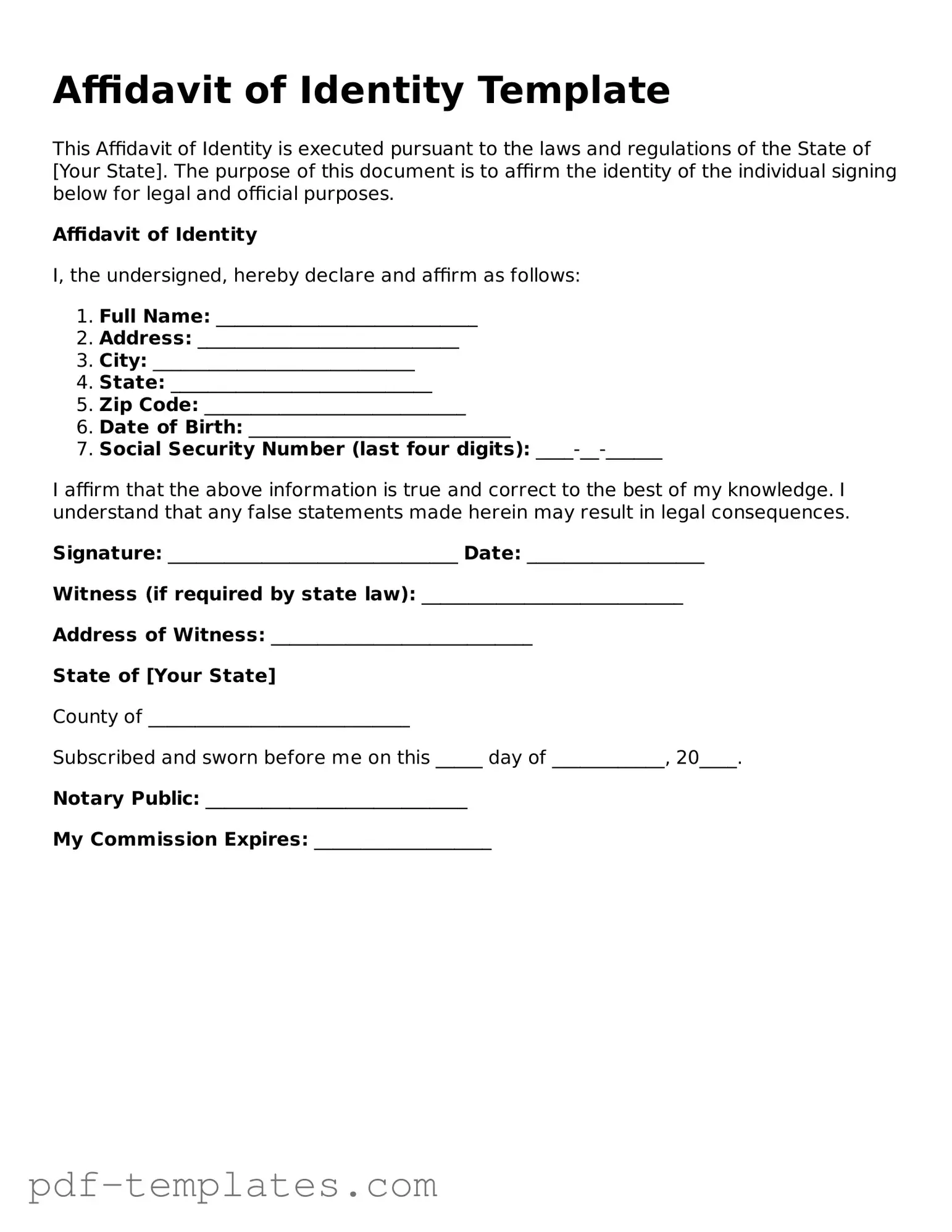The Affidavit of Identity is similar to a Declaration of Identity, which serves a similar purpose. A Declaration of Identity is a written statement in which an individual asserts their identity under oath. Like the Affidavit, it is often used in legal situations where proof of identity is required. Both documents help to confirm a person's identity and can be used in various legal proceedings, including court cases and property transactions.
Another document akin to the Affidavit of Identity is the Identity Verification Form. This form is typically utilized by financial institutions and businesses to verify the identity of their clients. While the Affidavit is a sworn statement, the Identity Verification Form may require supporting documentation, such as a government-issued ID. Both documents aim to ensure that the individual’s identity is accurately established, thereby preventing fraud and identity theft.
The Certificate of Identity is also comparable to the Affidavit of Identity. This certificate is often issued by government agencies to confirm an individual's identity for specific purposes, such as obtaining a passport. While the Affidavit is a personal declaration, the Certificate is an official document that carries more weight in formal settings. Both documents can be crucial in situations where identity confirmation is necessary.
Understanding the importance of a Single Status Affidavit is essential in legal contexts, particularly when verifying that an individual is free to marry. This document can often be a critical requirement, especially when dealing with foreign marriage licenses. For those looking for detailed guidance on how to obtain this document, it's advisable to consult resources like topformsonline.com/single-status-affidavit/.
A Statutory Declaration is another document that bears similarities to the Affidavit of Identity. This legal document allows individuals to declare certain facts as true, often used in lieu of an affidavit in jurisdictions where it is permitted. While both require a sworn statement, a Statutory Declaration may not always need to be notarized. They both serve to affirm identity and can be used in legal contexts where proof of identity or facts is required.
The Identity Affidavit is closely related as well. This document is specifically designed to affirm a person's identity and is often required in legal situations, such as court proceedings or property transactions. Similar to the Affidavit of Identity, the Identity Affidavit is a sworn statement and may require witnesses or notarization. Both documents focus on establishing the identity of the individual in a formal and legally binding manner.
Lastly, the Personal Identification Affidavit shares similarities with the Affidavit of Identity. This document is often used in legal contexts where an individual needs to provide proof of their identity and personal details. Like the Affidavit of Identity, it is a sworn statement, and it may be used in various legal processes, including court cases and financial transactions. Both documents aim to provide assurance of identity and can be critical in preventing identity-related fraud.
